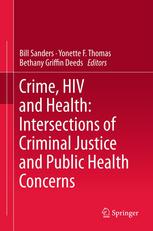

Most ebook files are in PDF format, so you can easily read them using various software such as Foxit Reader or directly on the Google Chrome browser.
Some ebook files are released by publishers in other formats such as .awz, .mobi, .epub, .fb2, etc. You may need to install specific software to read these formats on mobile/PC, such as Calibre.
Please read the tutorial at this link: https://ebookbell.com/faq
We offer FREE conversion to the popular formats you request; however, this may take some time. Therefore, right after payment, please email us, and we will try to provide the service as quickly as possible.
For some exceptional file formats or broken links (if any), please refrain from opening any disputes. Instead, email us first, and we will try to assist within a maximum of 6 hours.
EbookBell Team

0.0
0 reviewsCarefully selected to reflect the latest research at the interface between public health and criminal justice in the US, these contributions each focus on an aspect of the relationship. How, for example, might a person’s criminal activity adversely affect their health or their risk of exposure to HIV infection? The issues addressed in this volume are at the heart of policy in both public health and criminal justice. The authors track a four-fold connection between the two fields, exploring the mental and physical health of incarcerated populations; the health consequences of crime, substance abuse, violence and risky sexual behaviors; the extent to which high crime rates are linked to poor health outcomes in the same neighborhood; and the results of public health interventions among traditional criminal justice populations.
As well as exploring these urgent issues, this anthology features a wealth of remarkable interdisciplinary contributions that see public health researchers focusing on crime, while criminologists attend to public health issues. The papers provide empirical data tracking, for example, the repercussions on public health of a fear of crime among residents of high-crime neighborhoods, and the correlations between HIV status and outcomes, and an individual’s history of criminal activity. Providing social scientists and policy makers with vital pointers on how the criminal justice and public health sectors might work together on the problems common to both, this collection breaks new ground by combining the varying perspectives of a number of key disciplines.